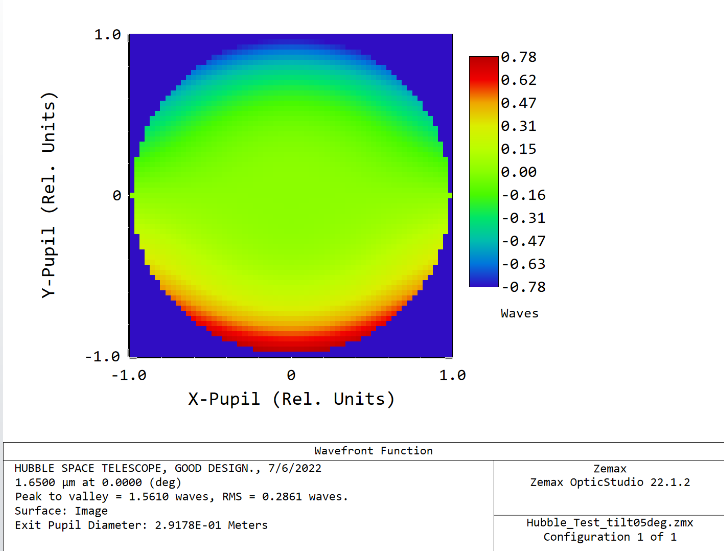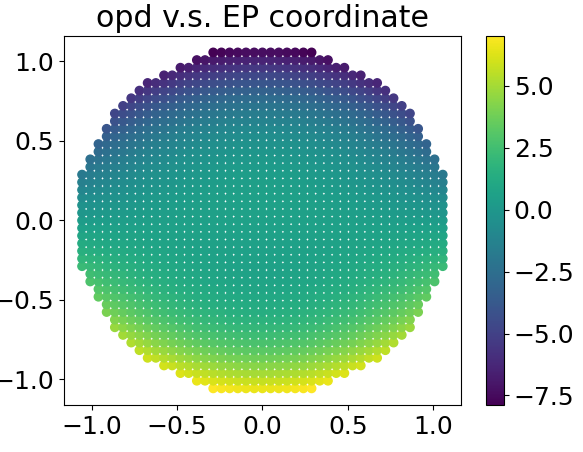Hi All,
I’m working on a Batch Ray Trace tool using the ZOS-API and need the optical path length of each ray I trace. When I look on the docs there appear to be three options
1) “None” : which returns optical path length of the ray
2) “Current” : which returns the path difference between the current ray and the previous ray
3) “CurrentAndChief”: which returns the path difference between the current ray and the chief ray
I was seeing results that were inconsistent with my expectations so I ran a test. If “None” returns the optical path length of the ray, and I subtract the mean value of all the computed OPL’s from each ray trace, then I should see a result that is similar to the Wavefront Map.

What I found is that the shape is similar, but the amplitude greater by a factor of ~10

What causes this difference?







